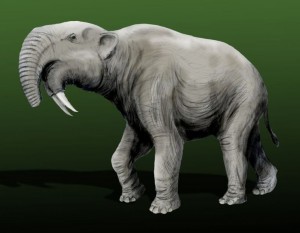SUNDAY, 28 NOVEMBER 2010
The research concludes that the decline of dinosaurs’ ecological dominance opened up new ecological space, which mammals were quick to fill. Mammal species diversified and increased exponentially in size: from a maximum of 10 kg in the Cretaceous to 17 tonnes in the early Tertiary. The largest animals, such as the fifteen foot tall elephant-like Deinotherium, were found in many different mammal groups and on all continents. This suggests that the ‘ecological release’ in the wake of the dinosaurs’ decline had widespread effects.These findings also provide an insight into the factors affecting maximum body size. After about 40 million years, the increase in size leveled off, suggesting that ecological constraints prevented a further increase in size. While it may be more efficient to be larger if an herbivore or if living in cold climates, resource limitations and physiological constraints prevent indefinite expansion. Furthermore, global temperatures and land availability seemed to correlate with maximum body size.
Written By Natalie Lawrence

